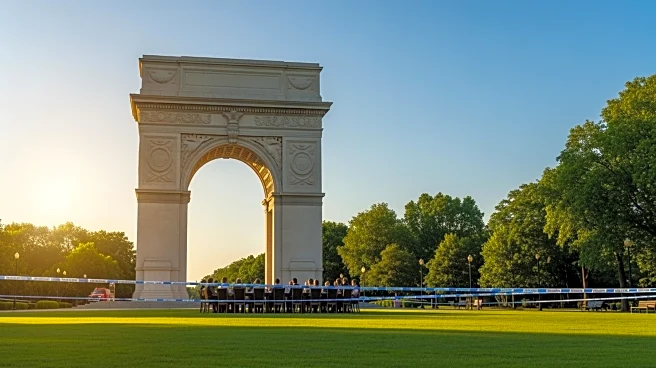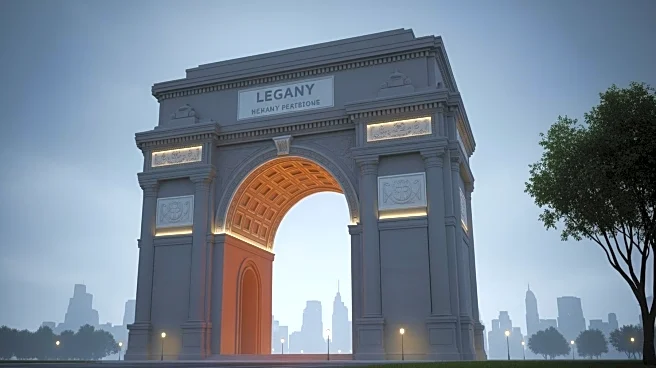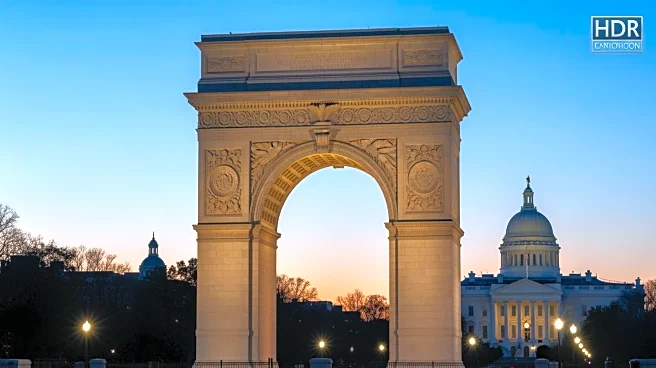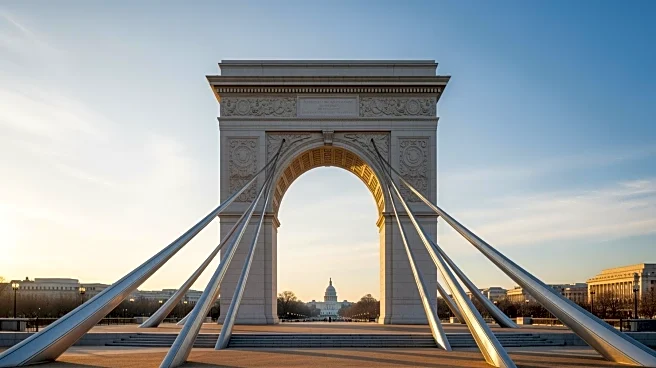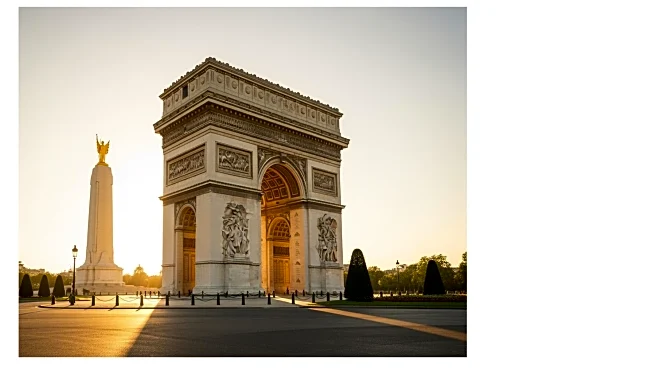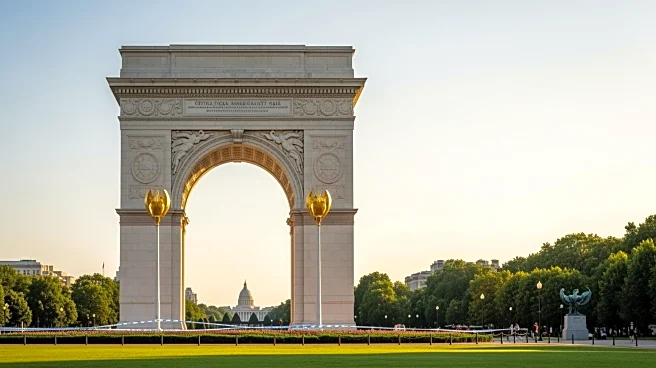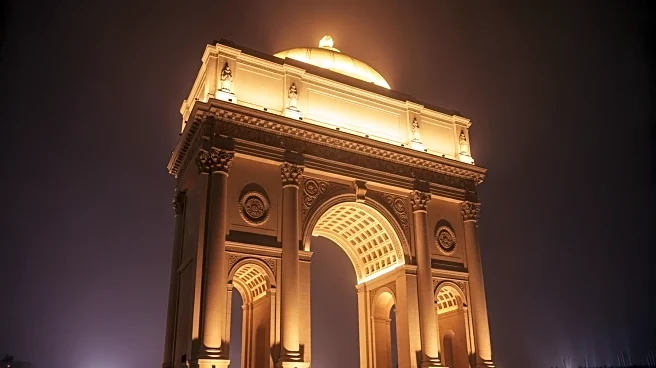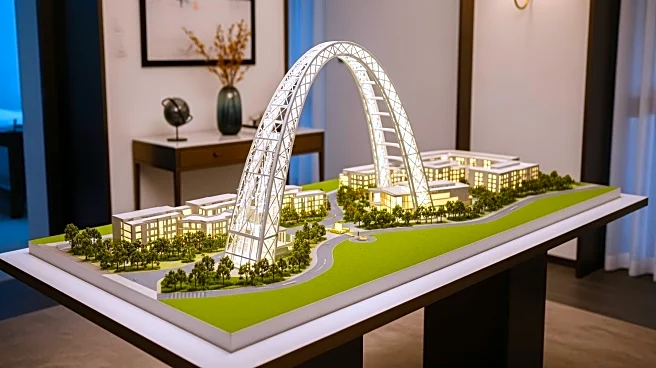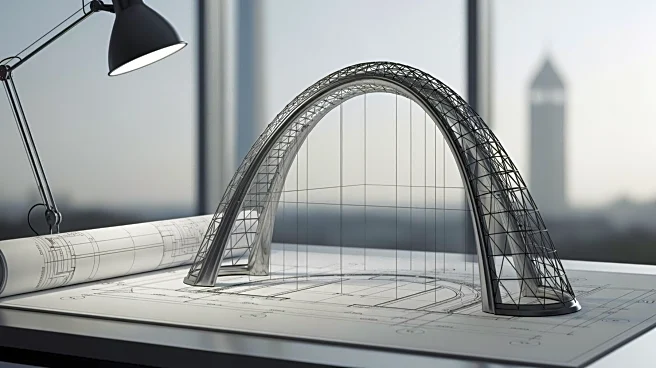What's Happening?
President Donald Trump has unveiled plans for a new monument in Washington, D.C., to commemorate the 250th anniversary of the United States. During a fundraising dinner at the White House, President Trump showcased models of a proposed arch, which is designed
in a classical style reminiscent of Paris' Arc de Triomphe and Brooklyn's Soldiers and Sailors' Memorial Arch. The arch, topped with eagles and a gilded statue symbolizing Victory, is intended to be a grand addition to the capital's landscape. The largest model of the arch would overshadow nearby landmarks such as the Lincoln Memorial. The proposed location for the arch is a traffic circle between Arlington National Cemetery and the Lincoln Memorial. The design approval process involves the U.S. Commission of Fine Arts, which is currently closed due to a government shutdown.
Why It's Important?
The proposed arch represents a significant cultural and architectural addition to Washington, D.C., potentially altering the city's iconic skyline. It underscores President Trump's interest in leaving a lasting legacy through monumental architecture. The project could stimulate discussions on national identity and historical commemoration, especially as the nation approaches its 250th anniversary. The arch's construction would involve substantial financial investment and could impact local tourism and infrastructure. However, the closure of the U.S. Commission of Fine Arts due to the government shutdown poses challenges to the project's approval and timeline.
What's Next?
The next steps for the proposed arch include obtaining design approval from the U.S. Commission of Fine Arts once it reopens. The timeline for construction remains uncertain, pending government operations and further planning. Stakeholders, including political leaders and civil society groups, may weigh in on the project's feasibility and cultural significance. Public opinion and potential opposition could influence the project's progression, especially regarding its scale and location.
Beyond the Headlines
The proposal raises questions about the role of monumental architecture in shaping national identity and historical memory. It may spark debates on the ethical implications of dedicating such a significant structure to a sitting president. The arch could become a focal point for discussions on the balance between personal legacy and national heritage, as well as the influence of political figures on public spaces.
